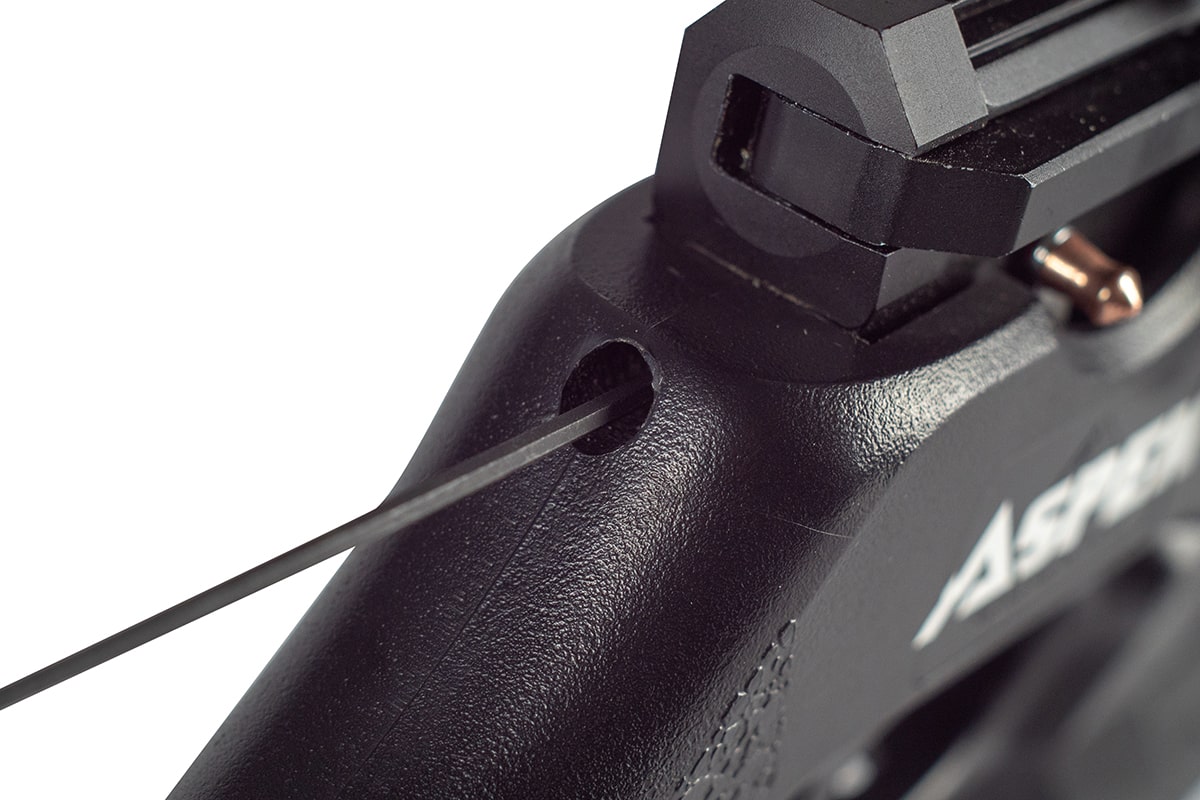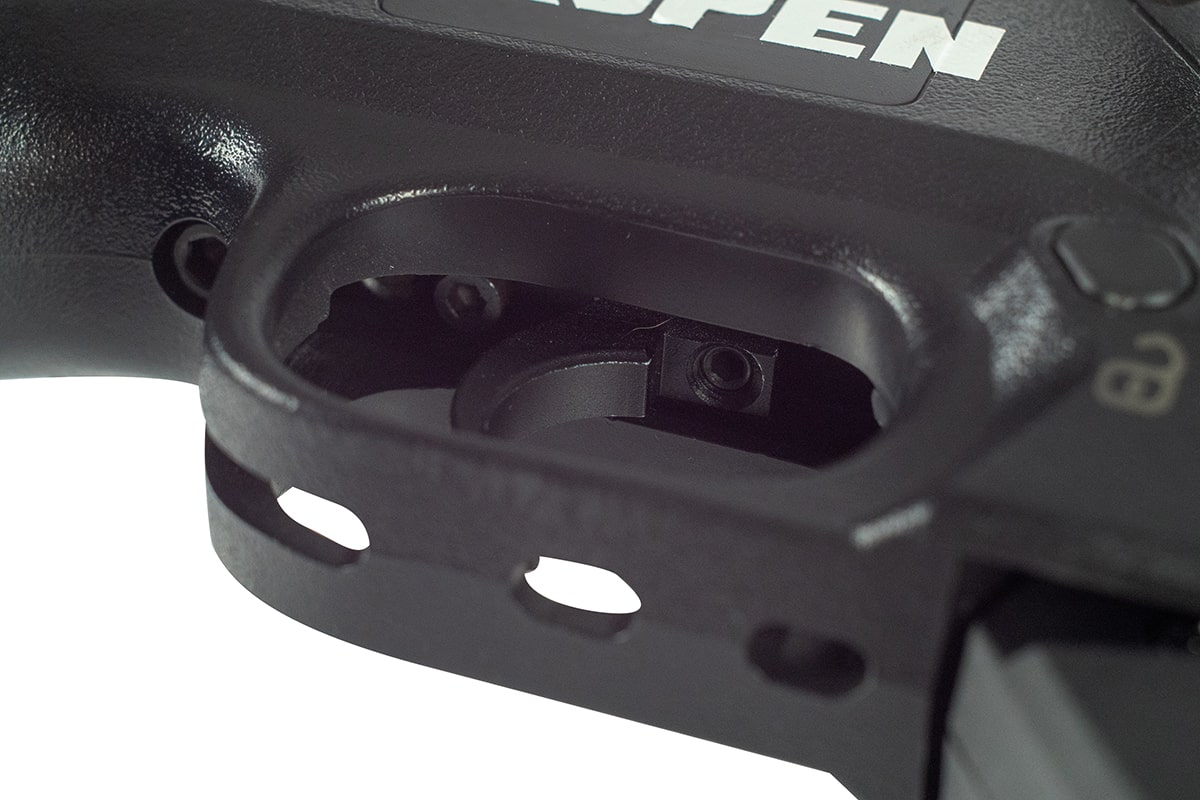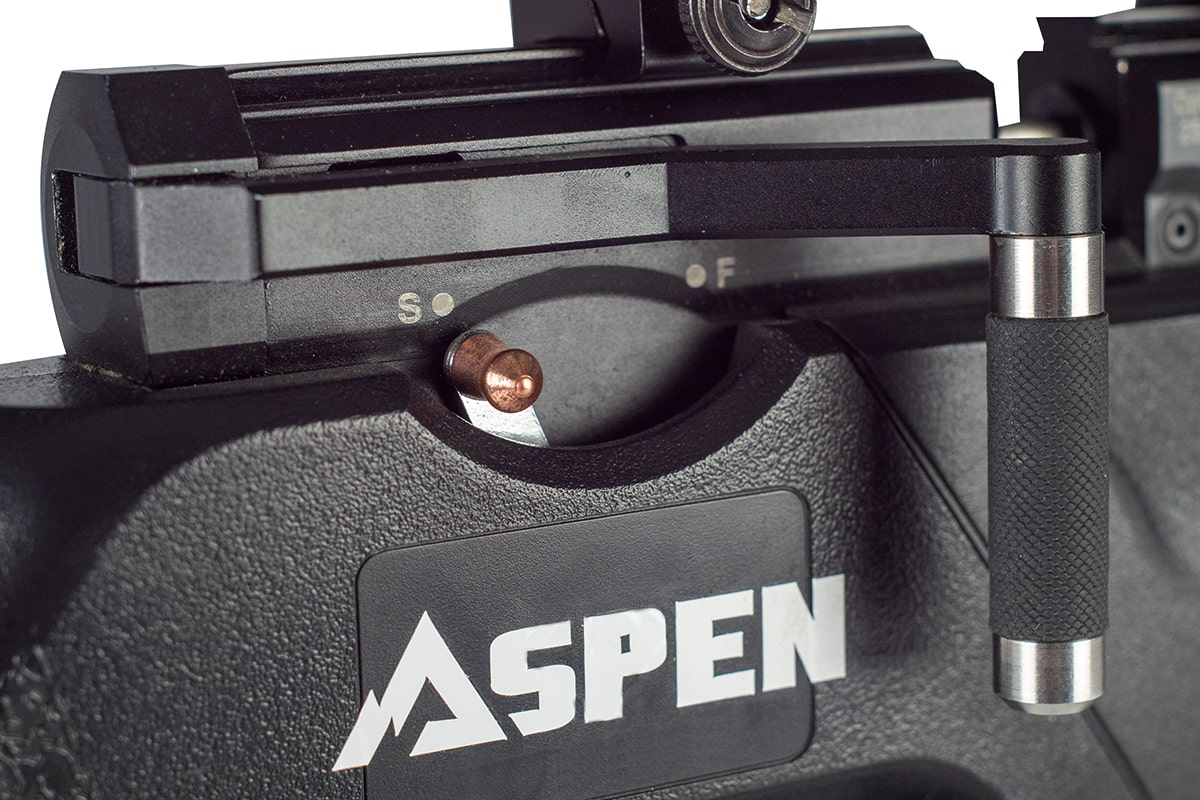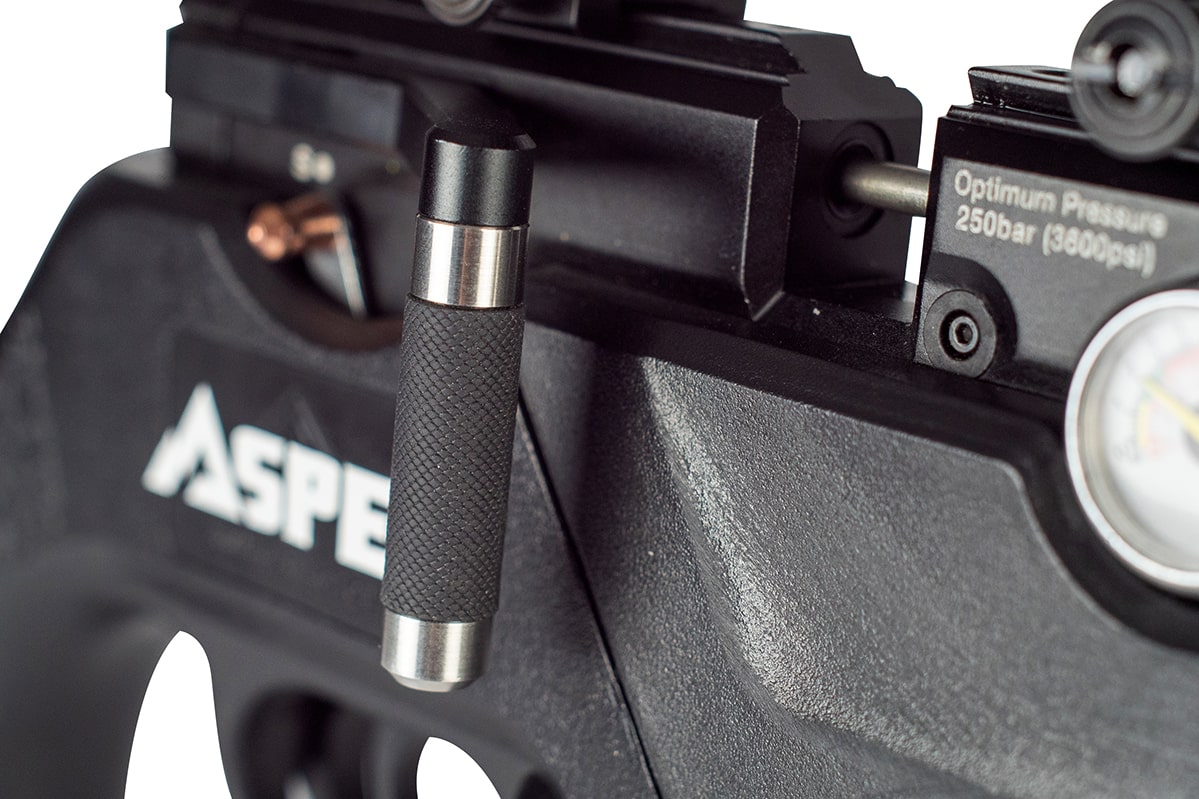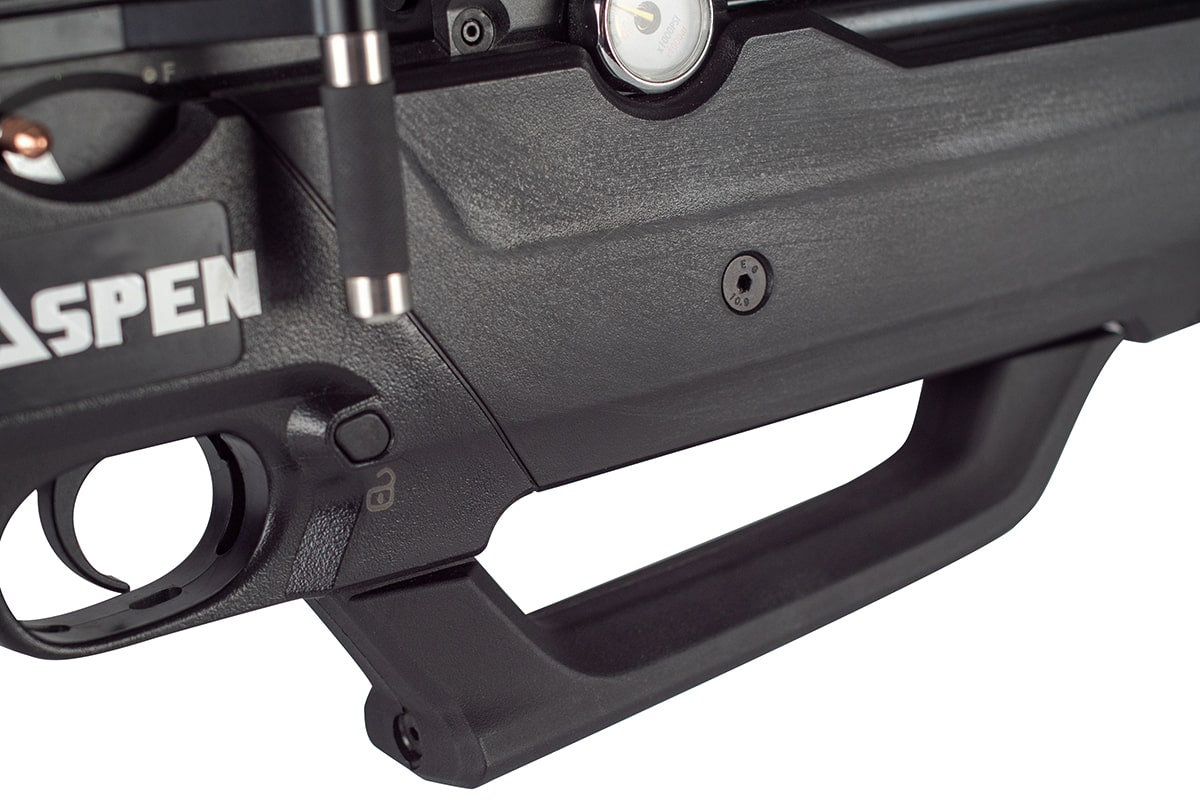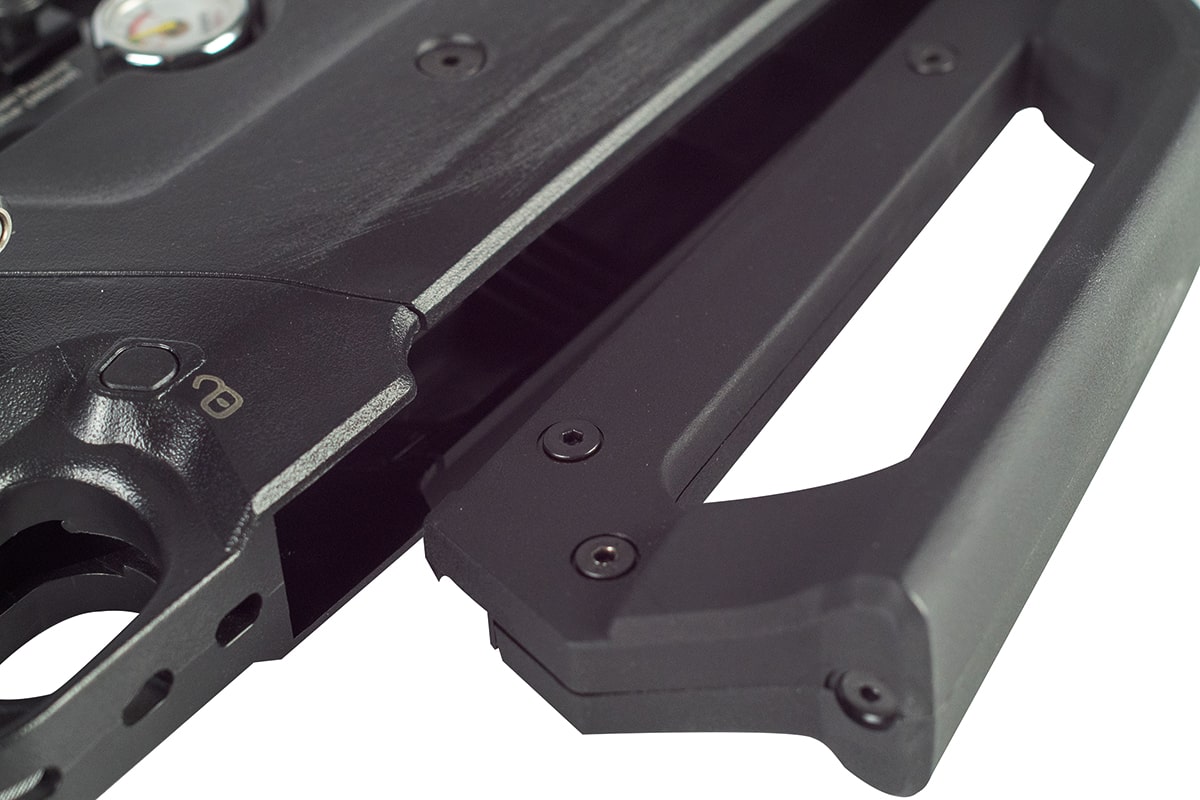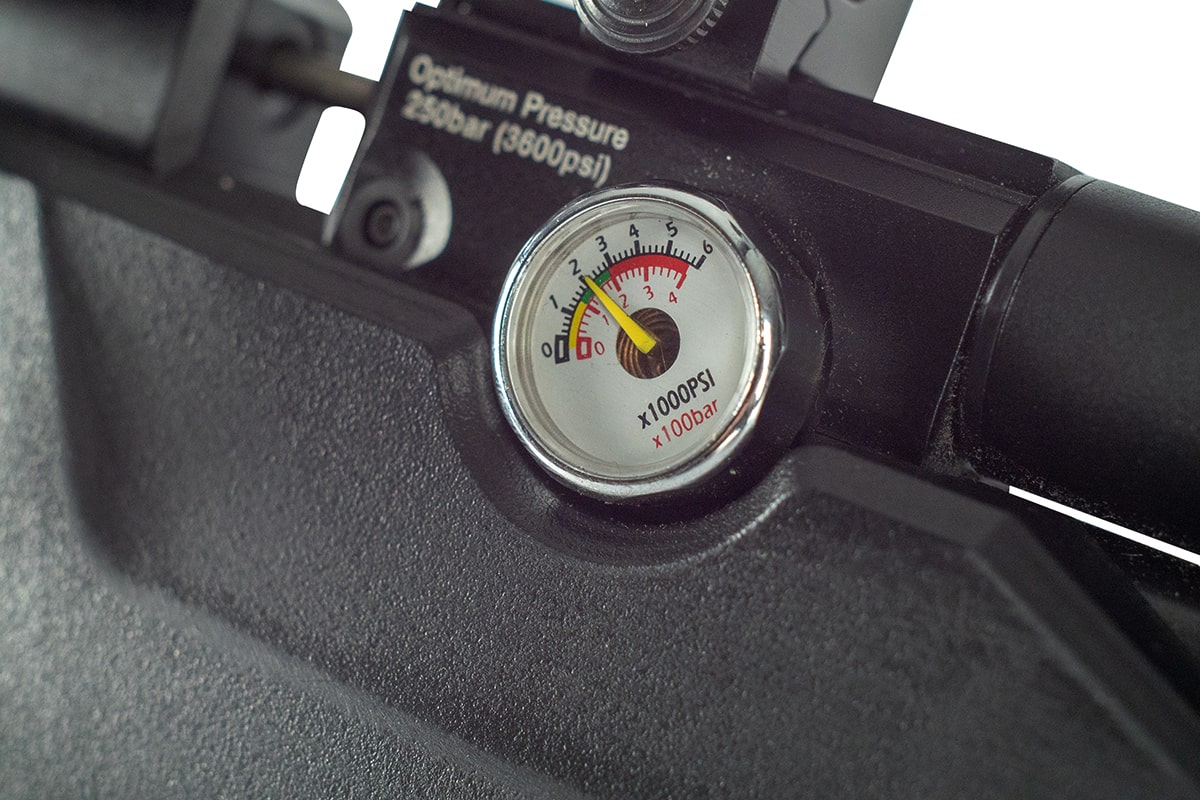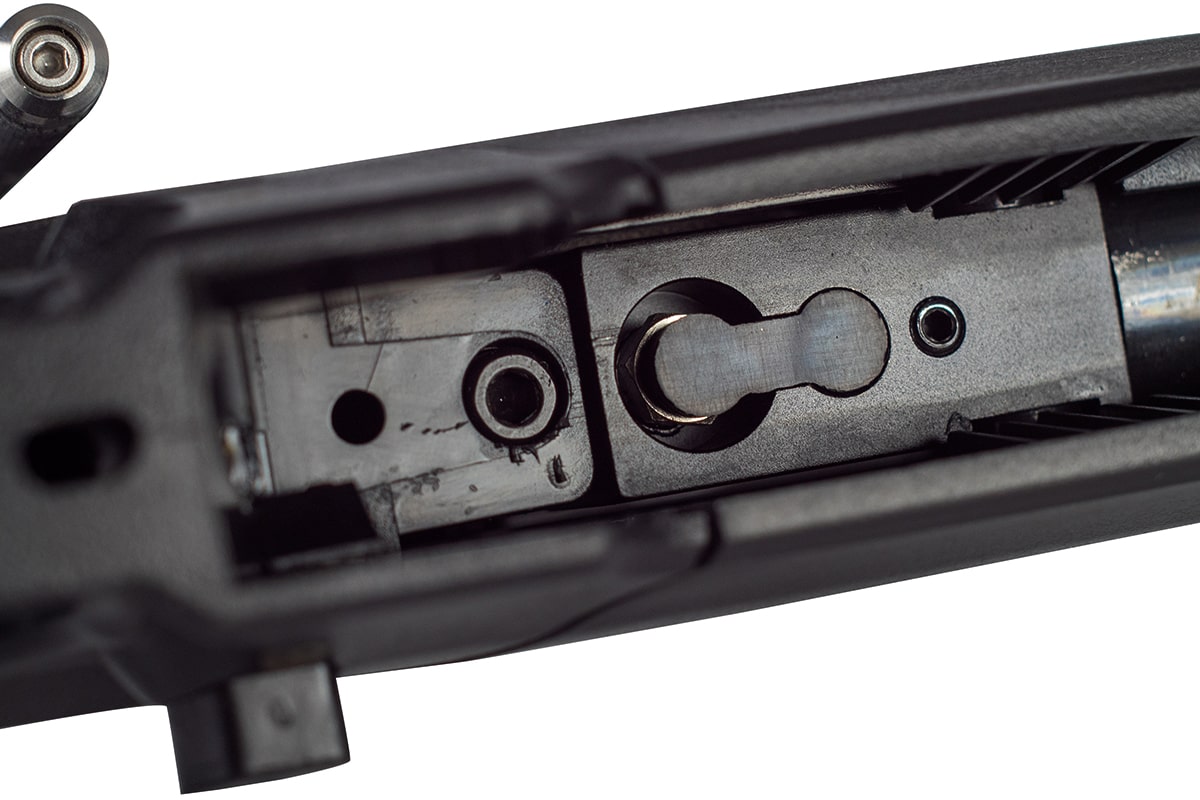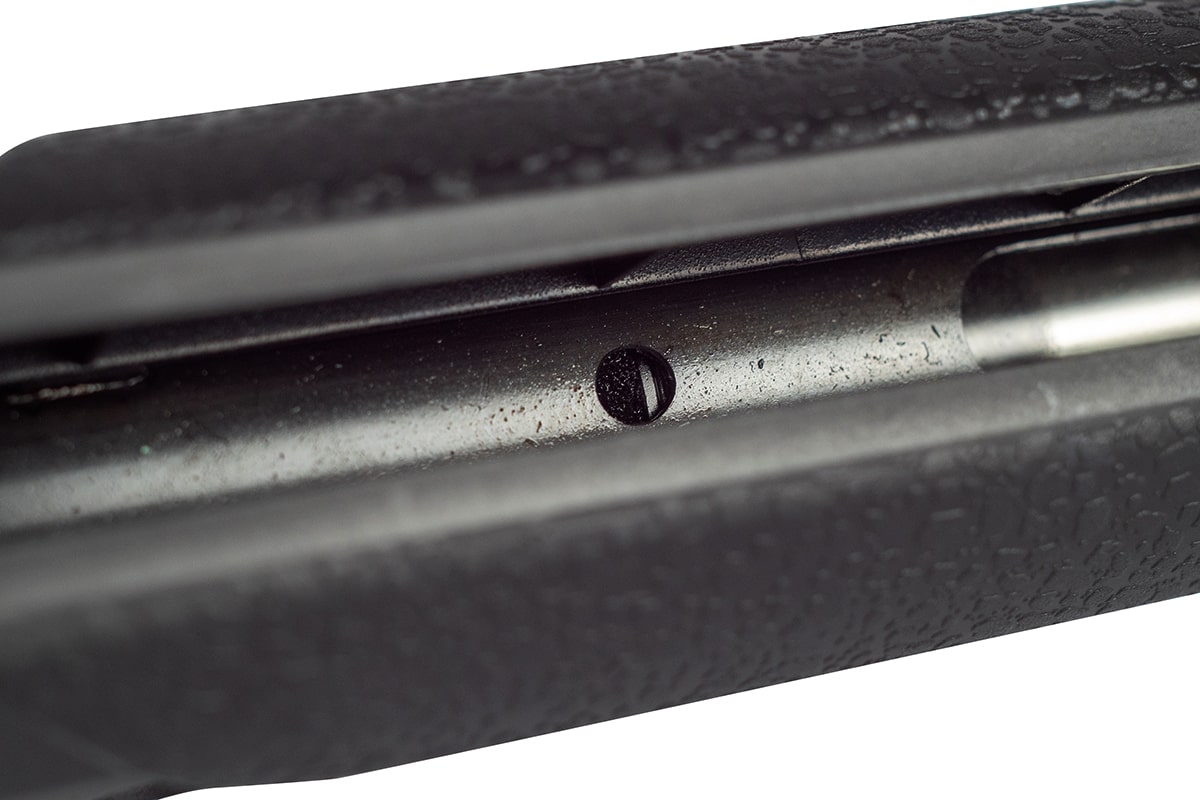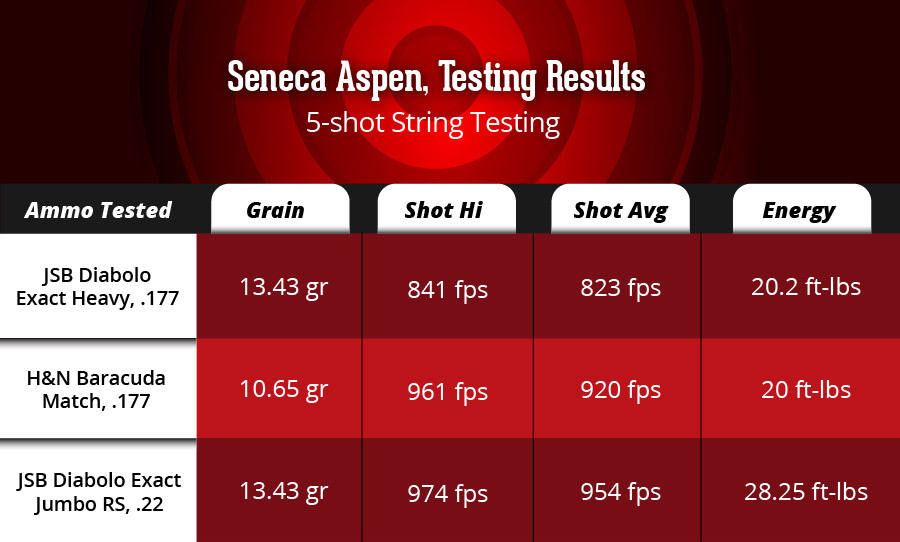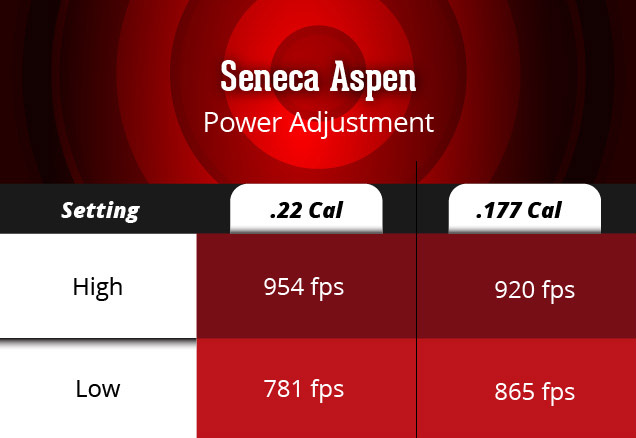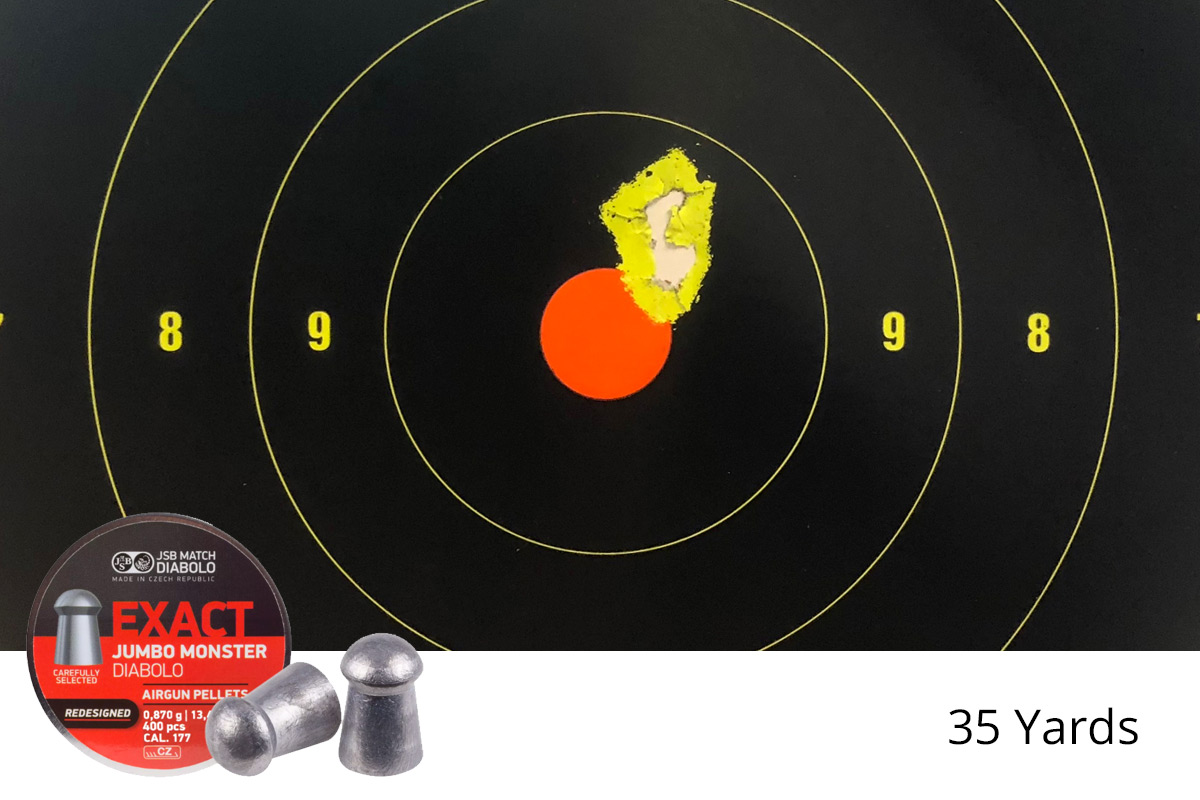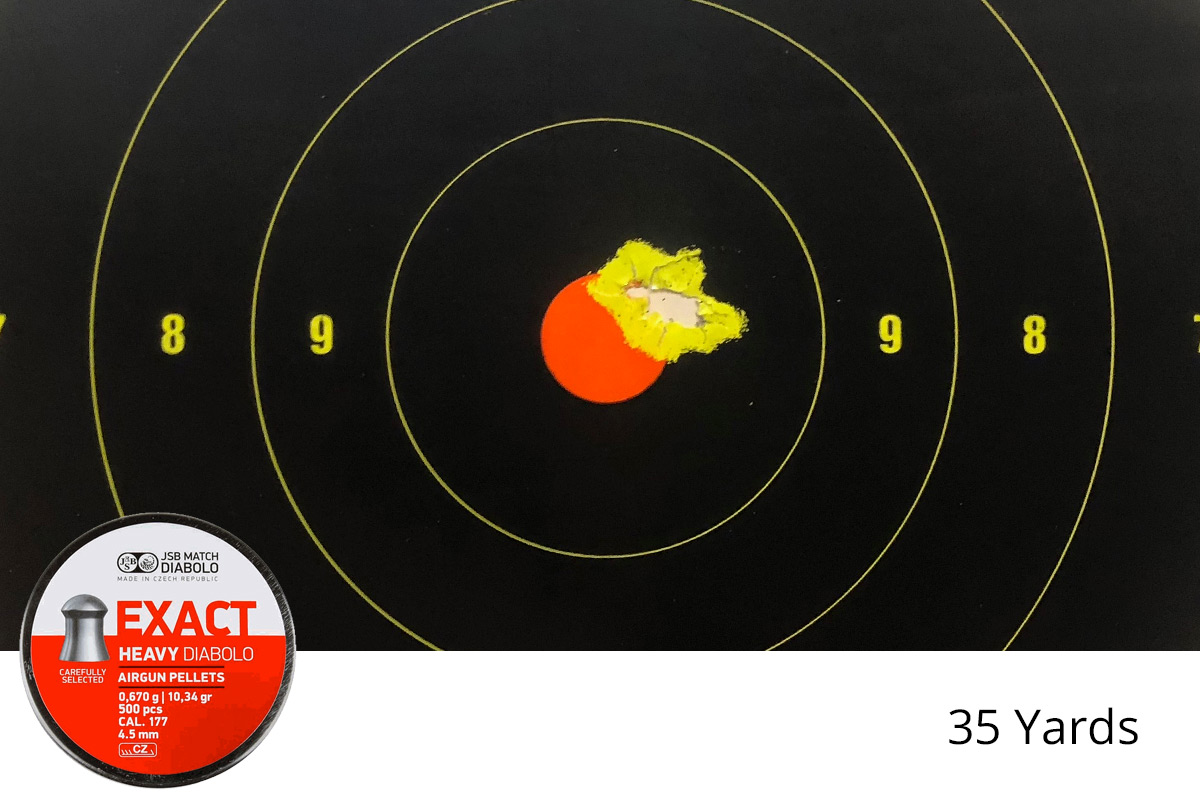Free Shipping on orders over $150
Talk to an Airgun Specialist 1-866-477-4867
Definitive Guide to Seneca Aspen
The Seneca Aspen takes the best aspects of PCPs and multi-pump pneumatics and gets rid of all the disadvantages - that's right, the Aspen is a multi-pump pre-charged pneumatic air rifle! Like a multi-pump, you pressurize the air reservoir yourself, but unlike most multi-pumps, you get multiple shots before needing to pump again. Like a PCP you can fill it from external sources, but unlike a PCP you aren't tied to tanks and compressors. And the Aspen is powerful and accurate. What else could you ask for? To learn more, read on!
Highlights
Detailed Review
The Seneca Aspen has a very distinctive look that grows on us the more we look at it. Its strong lines give the impression of solidity, but the synthetic stock is lighter than it looks, and the gun weighs only 8lbs. The Seneca has a basic synthetic stock, and it does sound a bit hollow, but to get all of these features at this price you can't expect a luxury stock. Texturing on key places on the stock look and feel good, although they may not add much grip when wet. A rubber butt pad will keep the Aspen securely in your shoulder and won't let the gun slip when you lean it up in the corner. A dovetail rail allows you to mount an optic and the Seneca Aspen comes with a fixed 4x32 AO scope that will work well for pesting and small game hunting. (The included scope is the key difference between the Seneca Aspen and the Nova Freedom that is brought in by a different importer.) The stock may be basic but the gun has a lot of high-end features. A transfer port power adjuster is remarkable on an air rifle at this price and it is easy to toggle between high and low power. This gives you a lot of flexibility to shoot heavy or light pellets, and lets you tailor your shooting for light backyard plinking or knock-down power for small game hunting and pesting. You can expect around a 200fps difference between high and low power. As if a transfer port adjustment wasn't enough, the Aspen also features a hammer spring adjustment that can be accessed without removing the stock. The manual describes it as a maintenance feature that can be used to correct for any loss of power over time but it can also be used to tune the gun. Turning it to the left with a 2.5mm Allen wrench will reduce the hammer spring tension and move the sweet spot (that middle part of the shot string where the shots are most consistent) downwards so you don't have to fill it up as much. Your average velocity will, of course, go down also. Turning it clockwise will do the reverse. Do no more than one turn at a time and then test it. Keep track of your adjustments so you can return it to factory settings in the future if you desire to. The trigger is adjustable, and right out of the box it is extremely crisp and breaks at about 2.5 lbs, which is just right for a hunting gun. We didn't adjust the travel because the trigger was set up perfectly, however, we did try to lessen the weight of pull but were unable to get it any lower. The manual safety is located just under the cocking lever and flips on and off easily and quietly. The Seneca Aspen boasts a European-style side-lever action, which is unheard of on a PCP at this price range! It may not be quite as smooth as those found on $2000 PCPs, but it is very good and makes cycling the magazine fast and easy. We like the way the rubber on the handle ensures a good grip. The ten-shot magazine for both the .177 and .22 is identical to those used by the Marauder so they are both affordable and easy to find, and one comes in the box with the gun. A slick single shot tray that locks into place via a magnet is also included for those of you who are looking for the utmost in accuracy.
Onboard Pump Features
Now let's take a look at what sets this airgun apart from almost every other PCP on the market. A cross-bolt release on the side frees the underlever and about 60-80 pumps will fill the gun from empty, and you'll get up to 20 shots per fill, depending on how you have the power set. Each shot uses the air from about 3-5 pumps, and pumping every 5-10 shots will give you a very consistent shot string. One of the most remarkable things about filling this gun with the onboard pump is how easy it to pump. Even when you reach 250 bar (3600psi) the pumping effort is only about 28 lbs, and those who have used hand pumps know how remarkable that is! However, you probably won't be filling it up to 3600psi; 2500-2900 will be the sweet spot to fill to for most guns and, as we mentioned above, you can adjust the hammer spring to bring that sweet spot lower if you like. Note that the gauge shows recommended fill pressure to be between 100 bar and 200 bar, not the 250 bar that the gun is rated for. A happy accident of the pump handle's design is that it acts as what is known in the field target world as a hamster, that is, an extension under the stock that raises the gun up so it is easier to shoot in the off-hand and seated positions. This makes it very convenient for small game hunting and pesting. Despite having this very convenient onboard pump, you still have the option of filling it from an external source (which is what actually makes it a PCP). The 50cc cylinder is very small compared to anything else on the market and fills up quickly with either a hand pump or a tank. We always prefer a foster fitting to a fill probe, but in this case, when they produce a rifle that has so much going on, we will give them a pass on a fill probe. Especially since they have machined a Foster fitting to the base of it so you don't need an adapter to fit your hose. This is something that should be standard on every fill probe, and we wish that all manufacturers would do this! The location of the fill port means that you can't tether this gun to an air tank, but it isn't designed as a bench gun in any case. If you unscrew the cap at the end of the tube there is what looks like a fill port, but ad far as we know it doesn't do anything. If you overfill the gun, the Aspen has a degassing valve, and if the pressure reaches dangerous levels there is an Automatic Overpressure Air Release, or in other words, a burst disk. It is recessed so you will probably need to send it to Air Venturi to be serviced should it burst. Every 300 shots (1-2000 pumps) you will need to put 6 drops of the included silicone oil into the oil port to keep the pump lubricated. Performance and Accuracy
We will be honest that we didn't really expect a high degree of performance from this gun, considering all of its features and the price, but we were blown away both by the power and the accuracy of the Seneca Aspen! We tested both the .177 and .22 versions and were impressed with both. On low power, the .177 shot JSB Exact 8.44s in the high 800s fps for about 14fpe and on high power it shot the 13.43 gr JSB Redesigned Monsters in the low to mid 800s for a muzzle energy of over 20 foot pounds. That is smoking! In .22 caliber, the gun was shooting slower than we wanted, so we inserted a 2.5mm allen wrench into the hammer spring adjuster and after two turns clockwise on high power it shot JSB RS 13.43s at a high of 974 fpe for a muzzle energy of over 28 fpe. On low power it shot them at about 800 fps for a muzzle energy of 18 fpe. The Aspen shoots way out of its class when it comes to accuracy. At 35 yards, the .22 consistently shot ten-shot groups of around 0.35 to 0.45 inches as long as we kept the gun in the sweet spot of the power curve. That is very good accuracy out of a $400 PCP! However, the .177 was even more accurate! It shot both the JSB 10.34 Heavies and the 13.43 Redesigned Monsters exceptionally well. In our Under Pressure review, with the JSB Redesigned Monsters, we shot a group that measured 0.15 wide by 0.42 inches tall, but it was clear that the group was tall because we didnt have it in the middle of the pressure curve. That is still a very good group, but off camera we have shot groups that measure 0.15" x 0.20". That is extremely good accuracy for any PCP, and for a gun at this price, it is absolutely phenomenal! Plus, the Redesigned Monsters are a very good long range pellet, so we are excited to do further testing out to 100 yards. Accessories
The beauty of the Seneca Aspen is that it doesnt need much in the way of accessories, but you might consider a sling, and definitely pick up some good JSB pellets to try in it. If you have good results with other pellets in your Seneca Aspen leave a comment below so others know what else to check out. Do you have a Seneca Aspen? If so leave a review and comment below once youve got some lead down range!